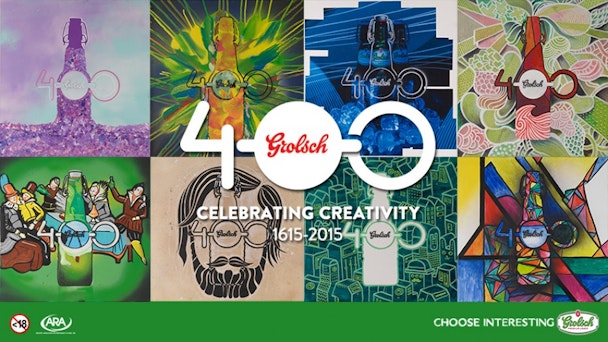'Visual marketing is common sense': Why more brands should be following Grolsch's lead
Grolsch’s assertiveness and artistry in embedding its brand into popular culture should be praised; its brand managers have quite rightly placed a great deal of confidence in the long-term brand building value of their approach.

For its 400th brand anniversary this year it commissioned artists to produce 400 pieces of art to redesign the Grolsch bottle and projected consumers’ self-portraits on to giant billboards. It’s partnership with that most youth-orientated brand, Vice Media, on content platform Canvas is another symbiotic creative partnership.
The site, which launched as part of the brand’s anniversary push, runs articles on culture and the arts from around the world. However, the long form written content on Canvas didn’t get the required traction with the brand’s young target audience leading Grolsch to turn to design agency Nation to make the hub more visually engaging to its audience.
This move is further evidence of how visuals continually trump the written word when it comes to getting that initial engagement from users online. Grolsch’s increased visual focus is riding a digital zeitgeist.
YouTube is the second largest search engine, next to Google, cameras are now a crucial feature on our smartphones and images have become a core interaction mechanic for the predominant digital platforms. The new wave of visually focused platforms, such as Snapchat, Instagram and Pinterest, are gaining ground on the more text-based Twitter and Facebook.
Research by Internet Matters last month showed British secondary school pupils are signing up for Snapchat in their droves, with some 57 per cent of children aged 11 to 16 using it, according to the survey of 6,500 students across the country. Meanwhile, just 52 per cent of youngsters are choosing Facebook.
In addition, Pinterest is pushing its visual approach even further, with the launch of a wordless search tool this month, which allows you to just zoom in on a object in a picture to discover the brand and where to find it.
By not only embracing but prioritising a visual approach across its channels, Grolsch is smartly positioning itself with the next generation of digital platforms which will assuredly be visual search and computer vision driven.
When it comes to reading, our brains decode visual information 60,000 times faster than text; visual marketing is common sense - as humans, our experience of the world is dominated by sight over the other senses.
Brands wanting to maintain their relevance and engage upcoming generations need to follow suit and fully embrace and invest in visual forms of communications and engagement.
Omaid Hiwaizi is president global marketing at visual discovery app Blippar
